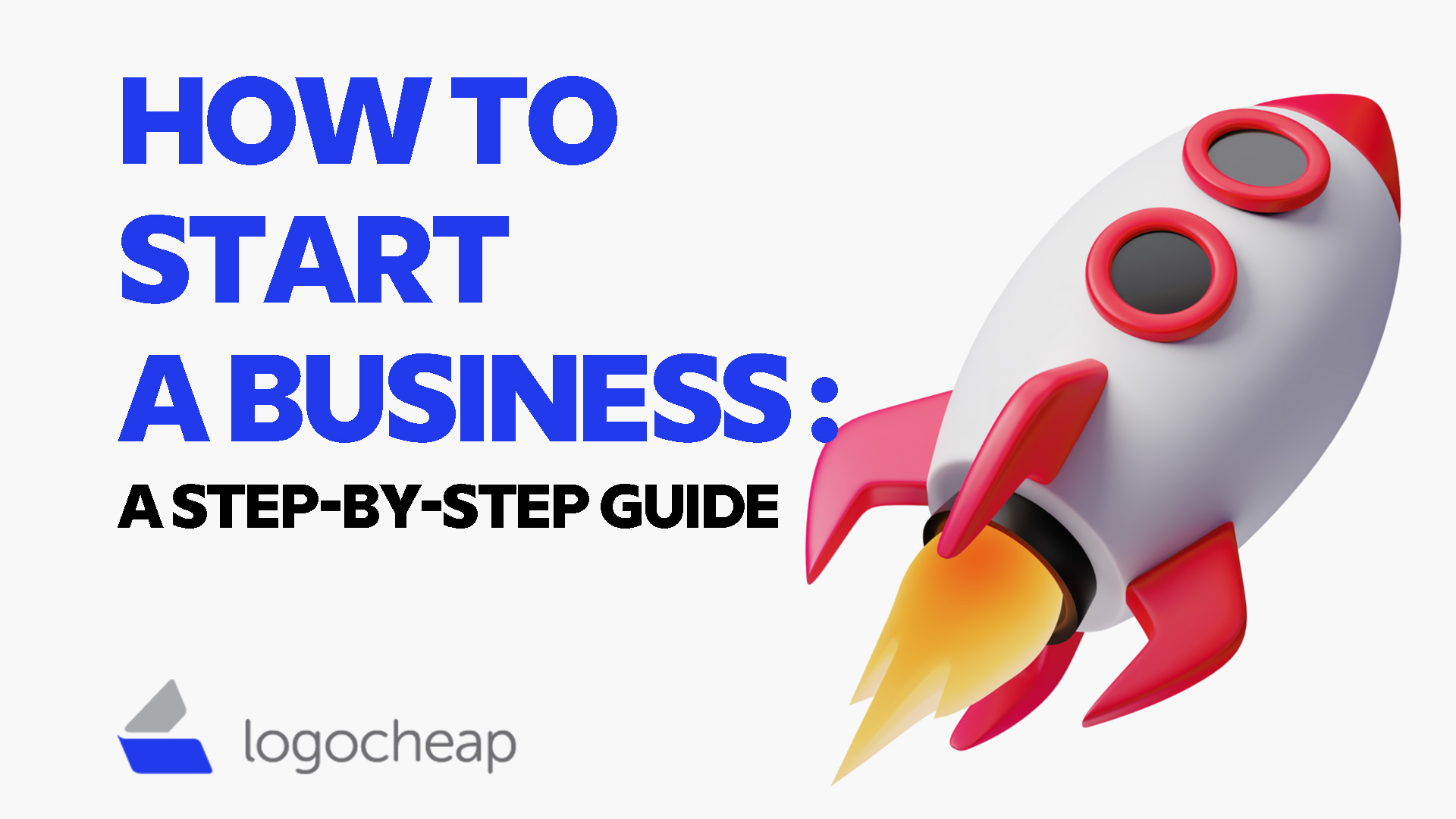- You should prepare thoroughly before starting a business, but realize that things will almost certainly go awry. To run a successful business, you must adapt to changing situations.
- Learning how to start your own business involves conducting in-depth market research on your field and the demographics of your potential clientele is an important part of crafting a business plan.
- In addition to selling your product or service, you need to build up your brand and get a following of people who are interested in what your business offers.
- This article is for anyone who wants to learn how to start a business.
Starting a business can be hard work, but if you break down the process of launching your new company into individual steps you can make it easier. Rather than spinning your wheels and guessing where to start, you can follow the tried and true methods of entrepreneurs who’ve done it successfully. If you want to learn how to start your own business, follow this 10-step checklist to transform your business from a lightbulb above your head into a real entity.
How to start a business
1. Refine your idea.

If you’re thinking about starting a business, you likely already have an idea of what you want to sell online, or at least the market you want to enter. Do a quick search for existing companies in your chosen industry. Learn what current brand leaders are doing and figure out how you can do it better. If you think your business can deliver something other companies don’t (or deliver the same thing, only faster and cheaper), you’ve got a solid idea and are ready to create a business plan.
Define your “why?”
“In the words of Simon Sinek, ‘always start with why,’” Glenn Gutek, CEO of Awake Consulting and Coaching, told Business News Daily. “It is good to know why you are launching your business. In this process, it may be wise to differentiate between [whether] the business serves a personal why or a marketplace why. When your why is focused on meeting a need in the marketplace, the scope of your business will always be larger than a business that is designed to serve a personal need.”

Consider franchising.
Another option is to open a franchise of an established company. The concept, brand following and business model are already in place; you only need a good location and the means to fund your operation.
Brainstorm your business name.
Regardless of which option you choose, it’s vital to understand the reasoning behind your idea. Stephanie Desaulniers, owner of Business by Dezign and former director of operations and women’s business programs at Covation Center, cautions entrepreneurs against writing a business plan or brainstorming a business name before nailing down the idea’s value.
Clarify your target customers.
People too often jump into launching their business without spending time to think about who their customers will be and why those customers would want to buy from them or hire them.
“You need to clarify why you want to work with these customers — do you have a passion for making people’s lives easier?” Desaulniers said. “Or enjoy creating art to bring color to their world? Identifying these answers helps clarify your mission. Third, you want to define how you will provide this value to your customers and how to communicate that value in a way that they are willing to pay.”
During the ideation phase, you need to iron out the major details. If the idea isn’t something you’re passionate about or if there’s no market for your creation, it might be time to brainstorm other ideas.
Tip: To refine your business idea, identify your “why,” your target customers and your business name.
2. Write a business plan.

Once you have your idea in place, you need to ask yourself a few important questions: What is the purpose of your business? Who are you selling to? What are your end goals? How will you finance your startup costs? These questions can be answered in a well-written business plan.
Fledgling business owners can make a lot of mistakes by rushing into things without pondering these aspects of the business. You need to find your target customer base. Who is going to buy your product or service? What would be the point if you can’t find evidence of a demand for your idea?
Conduct market research.
Conducting thorough market research on your field and the demographics of your potential clientele is an important part of crafting a business plan. This involves conducting surveys, holding focus groups, and researching SEO and public data.
Market research helps you understand your target customer — their needs, preferences and behavior — as well as your industry and competitors. Many small business professionals recommend gathering demographic information and conducting a competitive analysis to better understand opportunities and limitations within your market.
The best small businesses have differentiated products or services from the competition. This significantly impacts your competitive landscape and allows you to convey unique value to potential customers.

Consider an exit strategy.
It’s also a good idea to consider an exit strategy as you compile your business plan. Generating some idea of how you’ll eventually exit the business forces you to look to the future.
“Too often, new entrepreneurs are so excited about their business and so sure everyone everywhere will be a customer that they give very little, if any, time to show the plan on leaving the business,” said Josh Tolley, CEO of both Shyft Capital and Kavana.
“When you board an airplane, what is the first thing they show you? How to get off of it. When you go to a movie, what do they point out before the feature begins to play? Where the exits are. During your first week of kindergarten, they line up all the kids and teach them fire drills to exit the building. Too many times I have witnessed business leaders that don’t have three or four predetermined exit routes. This has led to lower company value and even destroyed family relationships.”
A business plan helps you figure out where your company is going, how it will overcome any potential difficulties, and what you need to sustain it. When you’re ready to put pen to paper, use a free template to help.
3. Assess your finances.

Starting any business has a price, so you need to determine how you will cover those costs. Do you have the means to fund your startup, or will you need to borrow money? If you’re planning to leave your current job to focus on your business, do you have savings to support yourself until you make a profit? Find out how much your startup costs will be.
Many startups fail because they run out of money before turning a profit. It’s never a bad idea to overestimate the amount of startup capital you need, as it can take time before the business begins to bring in sustainable revenue.
Perform a break-even analysis.
One way you can determine how much money you need is to perform a break-even analysis. This essential element of financial planning helps business owners determine when their company, product or service will be profitable.
The formula is simple:
- Fixed Costs ÷ (Average Price Per Unit – Variable Costs) = Break-Even Point

Every entrepreneur should use this formula as a tool because it tells you the minimum performance your business must achieve to avoid losing money. Furthermore, it helps you understand exactly where your profits come from, so you can set production goals accordingly.
Here are the three most common reasons to conduct a break-even analysis:
1. Determine profitability. This is generally every business owner’s highest interest.
Ask yourself: How much revenue do I need to generate to cover all my expenses? Which products or services turn a profit, and which ones are sold at a loss?
2. Price a product or service. When most people think about pricing, they consider how much their product costs to create and how competitors are pricing their products.
Ask yourself: What are the fixed rates, what are the variable costs, and what is the total cost? What is the cost of any physical goods? What is the cost of labor?
3. Analyze the data. Consider the volume of goods or services you would have to sell to be profitable.
Ask yourself: How can I reduce my overall fixed costs? How can I reduce the variable costs per unit? How can I improve sales?
Watch your expenses.
Don’t overspend when starting a business. Understand the types of purchases that make sense for your business and avoid overspending on fancy new equipment that won’t help you reach your business goals. Monitor your business expenses to ensure you are staying on track.
“A lot of startups tend to spend money on unnecessary things,” said Jean Paldan, founder and CEO of Rare Form New Media. “We worked with a startup with two employees but spent a huge amount on office space that would fit 20 people. They also leased a professional high-end printer that was more suited for a team of 100; it had key cards to track who was printing what and when. Spend as little as possible when you start, and only on the things essential for the business to grow and succeed. Luxuries can come when you’re established.”





